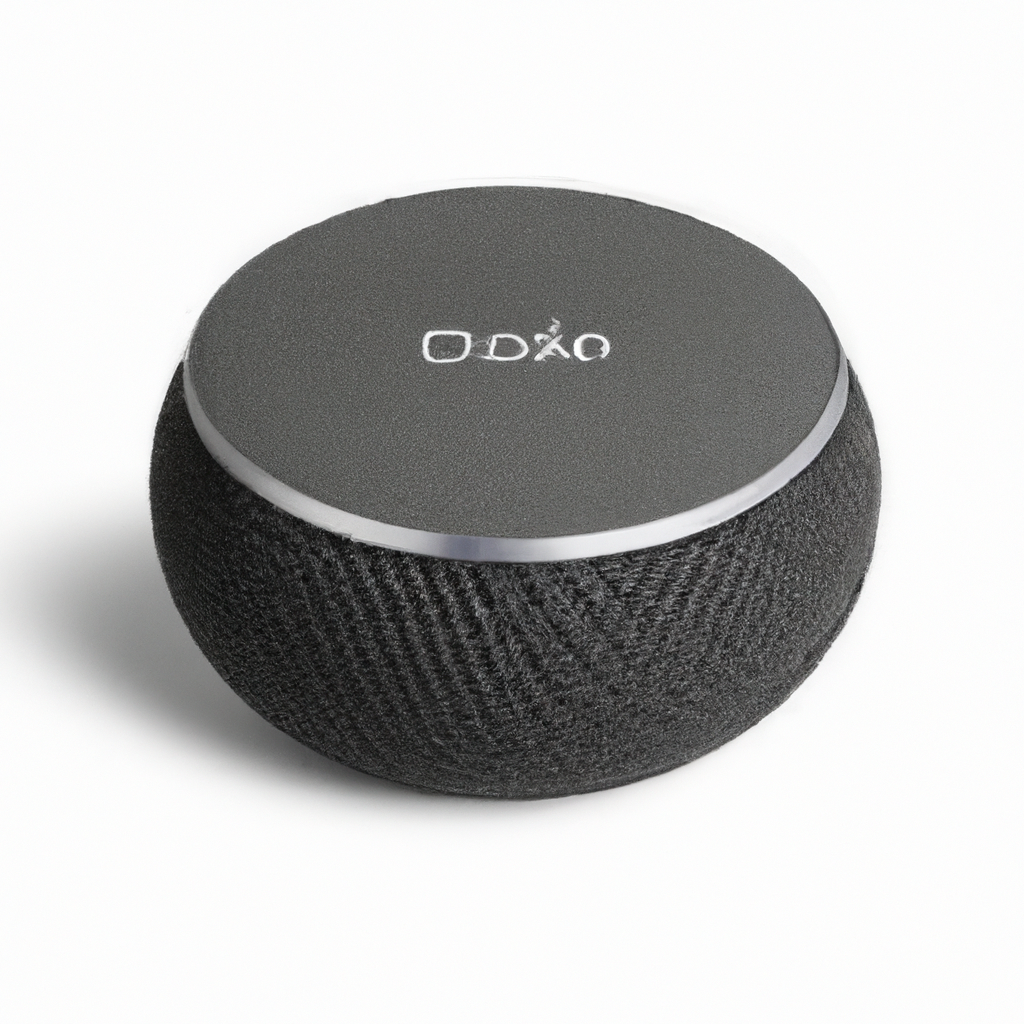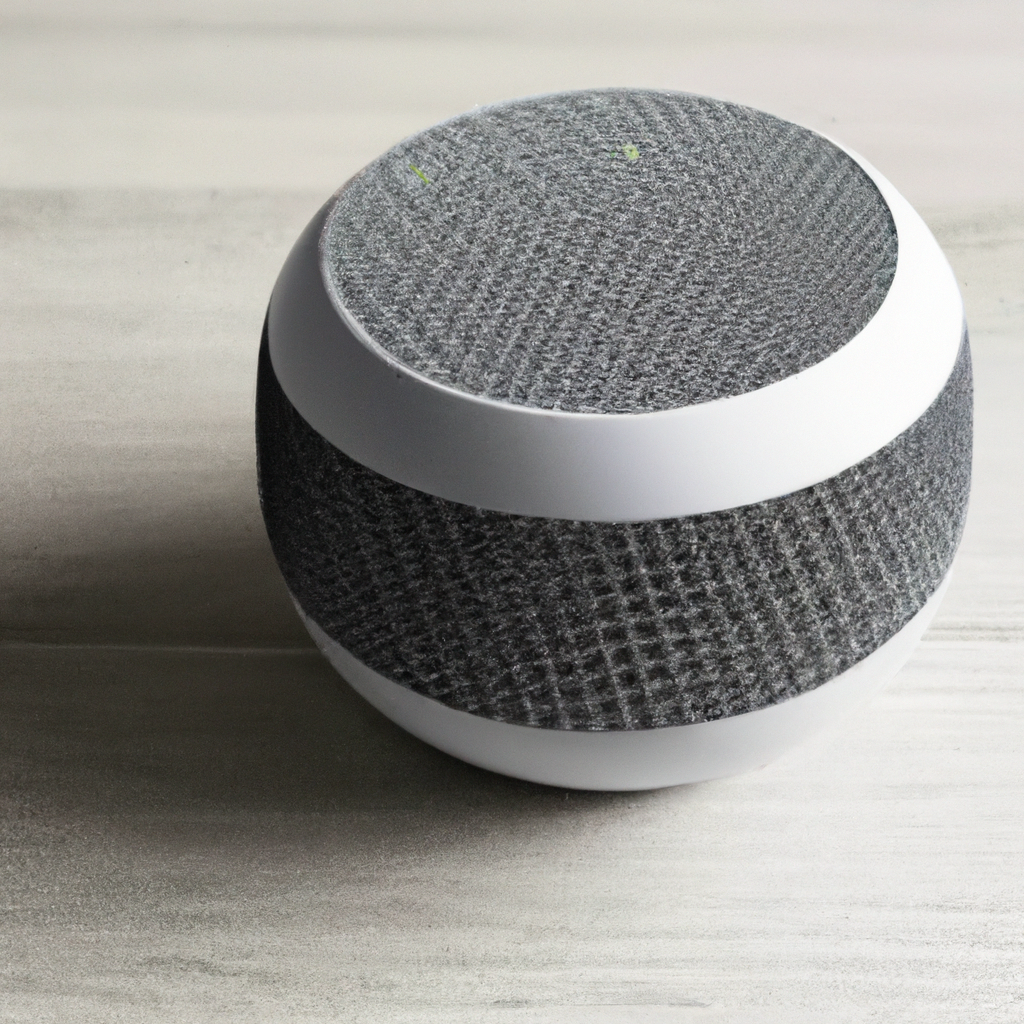Have you ever wondered which voice assistants are available on popular smart speakers? Well, look no further! In this article, we will explore the different voice assistants that you can find on the most popular smart speakers in the market. From Amazon’s Alexa to Google Assistant and Apple’s Siri, we will delve into the features and capabilities of each voice assistant, helping you choose the perfect one to meet your needs. So, let’s get started and unravel the world of voice assistants on our favorite smart speakers!

Voice Assistants on Popular Smart Speakers
Smart speakers have become increasingly popular, and with their rise in popularity, voice assistants have become an integral part of our lives. These assistants are designed to make our lives easier by providing us with information, performing tasks, and controlling our connected devices – all through voice commands. Let’s take a closer look at some of the most popular voice assistants found on smart speakers.
Amazon Alexa
Alexa, developed by Amazon, is perhaps one of the most well-known and widely adopted voice assistants. It is the voice behind Amazon’s Echo devices and has an extensive range of capabilities. From answering general knowledge questions to controlling smart home devices, playing music, and even ordering products online, Alexa offers a versatile and intuitive user experience.
Google Assistant
Google Assistant, developed by Google, is another highly popular voice assistant found on the Google Home devices. With Google’s vast knowledge base, Assistant excels at providing quick and accurate answers to questions, as well as helping with tasks like setting reminders, sending messages, and even playing games. Its integration with other Google services, such as Google Maps, helps provide personalized and contextually relevant assistance.
Apple Siri
Siri, developed by Apple, made its debut on the iPhone before finding its way onto Apple’s smart speaker, the HomePod. Siri is known for its natural language understanding capabilities and its integration with Apple’s ecosystem. From sending messages and making calls to controlling HomeKit-enabled devices and providing personalized recommendations, Siri offers a seamless and intuitive user experience for Apple users.
Microsoft Cortana
Cortana, developed by Microsoft, is the voice assistant that powers their smart speaker, the Harman Kardon Invoke. Cortana leverages Microsoft’s artificial intelligence technology to provide users with a more conversational and context-aware experience. In addition to the usual tasks like checking the weather or answering trivia questions, Cortana can also perform more productivity-focused tasks like scheduling meetings or sending emails.
Samsung Bixby
Bixby, developed by Samsung, is the voice assistant found on their smart speaker, the Galaxy Home. Bixby aims to provide a more personalized and contextual experience by learning from user interactions. It can control Samsung devices and services, as well as perform various tasks like setting reminders, searching the web, and providing recommendations. Bixby’s integration with Samsung’s ecosystem gives it a unique advantage for Samsung users.
Other Voice Assistants
While the above-mentioned voice assistants are the most well-known and widely used, there are several other voice assistants available on smart speakers. These include assistants like Lenovo Smart Assistant with Alexa, Sonos One with Alexa, and numerous third-party assistants found on smaller smart speaker brands. These voice assistants often have their own unique features and capabilities, catering to different user preferences and needs.
Features and Capabilities
voice assistants on smart speakers offer a wide range of features and capabilities, making them versatile and useful in various aspects of our daily lives. Here are some of the key features and capabilities commonly found in these voice assistants:
Voice Recognition and Activation
One of the fundamental features of voice assistants is their ability to recognize and activate upon hearing a specific wake word or phrase. Each voice assistant has its own unique wake word, such as “Alexa” for Amazon’s Alexa or “Hey Google” for Google Assistant. This ensures that the voice assistant only responds when explicitly called upon, providing a hands-free and convenient user experience.
Natural Language Understanding
Voice assistants have come a long way in their ability to understand and interpret natural language commands. They can process and analyze spoken language, allowing users to interact with them in a more conversational and intuitive manner. Natural language understanding enables voice assistants to accurately interpret user requests and provide appropriate responses or actions.
Smart Home Integration
One of the most popular use cases for voice assistants is controlling smart home devices. Voice assistants like Alexa, Google Assistant, Siri, and Bixby can connect and communicate with a wide range of smart home devices, such as smart lights, thermostats, and security systems. This integration allows users to control their smart home devices through voice commands, making home automation more accessible and seamless.
Music and Media Playback
Voice assistants excel at playing music and other forms of media. Users can simply ask their voice assistant to play a specific song, artist, or genre, and the assistant will access music streaming services to fulfill the request. In addition to music playback, voice assistants can also provide news updates, play podcasts, and even control media playback on connected devices such as TVs or speakers.
Personal and General Information
Voice assistants are a treasure trove of information. Users can ask them general knowledge questions, get weather updates, check traffic conditions, or even find answers to complex math problems. Voice assistants can also provide information about restaurants, movie showtimes, and various other points of interest. The ability to access vast knowledge databases makes voice assistants a valuable source of information.
Third-Party Skills and Apps
Voice assistants offer a platform for third-party developers to create skills or apps that extend the functionality of the assistant. These skills or apps allow users to perform additional tasks, access specific services, or play games. For example, Alexa has a wide range of skills developed by third parties, enabling users to order food, book a ride, or play interactive games, among many other possibilities.
Multilingual Support
As voice assistants become more global, multilingual support becomes essential. Voice assistants like Google Assistant and Siri support multiple languages, enabling users to interact with them in their preferred language. This feature enhances accessibility and user experience for speakers of different languages and promotes inclusivity in the adoption of voice assistants.
Privacy and Security Features
With voice assistants constantly listening for their wake word, privacy and security are important considerations. Voice assistant providers have implemented various features to address these concerns. For example, voice assistants often have physical mute buttons or privacy settings that allow users to disable listening temporarily. Additionally, voice assistants employ encryption and secure protocols to protect user data and ensure the privacy of interactions.

User Experience and Interaction
A key aspect of voice assistants on smart speakers is the user experience and interaction design. To provide a friendly and intuitive experience, voice assistants incorporate various features and mechanisms that enhance user interaction. Let’s explore some of these aspects:
Wake Words and Rainy Day Skills
Wake words serve as the trigger for voice assistants to start listening and responding to user commands. These wake words, such as “Alexa” or “Hey Google,” are carefully chosen to be easily recognizable and memorable. Moreover, some voice assistants, like Alexa, offer “Rainy Day Skills.” These are skills that can still be accessed even without an internet connection, ensuring a seamless and uninterrupted experience for users.
Conversational Flow and Context
Voice assistants aim to create a conversational experience by understanding user context and maintaining continuity in dialogue. They can remember previous interactions, allowing users to refer back to earlier queries or continue conversations seamlessly. This contextual understanding enhances user engagement and creates a more natural and intuitive interaction with the voice assistant.
Feedback and Confirmation Mechanisms
When users interact with a voice assistant, it’s important to receive feedback and confirmation to ensure successful execution of commands. Voice assistants often provide audio or visual feedback, such as a chime or a light ring, to indicate that they are listening and processing the command. Additionally, voice assistants may confirm actions taken or provide status updates to give users confidence and assurance.
Interruptibility and Pausing
Voice assistants understand that interruptions are a part of real-life conversations. They are designed to handle interruptions gracefully and resume the conversation seamlessly. Voice assistants can pause when interrupted by another command or question and then pick up where they left off once the interruption is over. This allows for a more natural and uninterrupted user experience.
Customization and Personalization
To cater to individual preferences, voice assistants provide customization options. Users can personalize their voice assistant by adjusting settings related to language, voice, volume, delivery speed, and more. This customization allows users to tailor the voice assistant to their liking, creating a more personalized and familiar interaction.
Voice Profiles and User Recognition
Voice assistants are becoming more adept at recognizing different voices and associating them with specific user profiles. This feature allows voice assistants to provide personalized experiences based on user preferences, such as accessing personalized recommendations or accessing individual calendars or playlists. Voice profiles and user recognition enhance the user experience by tailoring responses and actions to specific users.
Compatibility and Ecosystem
Voice assistants on smart speakers are not standalone entities but are part of a larger ecosystem of devices and services. Let’s explore the various aspects of compatibility and ecosystem integration:
Smart Devices and Services Integration
Voice assistants offer compatibility with a wide range of smart devices and services. This integration enables users to control their smart home devices, such as lights, thermostats, and security systems, through voice commands. Additionally, voice assistants can interact with other services, such as ride-sharing apps or food delivery services, allowing users to perform tasks without needing to touch a smartphone or open an app.
Cross-Platform Support and Interoperability
As the popularity of voice assistants grows, cross-platform support and interoperability become vital. For example, Google Assistant is available on various smart speakers, smartphones, and other devices, allowing users to have a consistent and seamless experience across different platforms. Interoperability ensures that regardless of the device a user interacts with, their preferences, settings, and data are synchronized, offering a fluid and unified voice assistant experience.
Syncing and Multi-Room Audio
Voice assistants excel in multi-room audio setups. With the ability to sync audio playback across multiple devices, users can create an immersive and synchronized listening experience in different rooms. For example, users can instruct their voice assistant to play music on speakers in the living room, bedroom, and kitchen simultaneously. This synchronization ensures a consistent audio experience throughout the home.
Smartphone Apps and Voice Control
Voice assistants often have companion smartphone apps that allow users to interact with them beyond the smart speaker itself. These apps offer additional control and customization options, such as managing device settings, accessing user-specific data, or even initiating voice commands remotely. Smartphone apps provide a convenient way for users to interact with their voice assistant, whether they are at home or on the go.
Streaming and Casting
Voice assistants allow users to stream media content from various services and cast it to compatible devices. Users can request their voice assistant to play music, podcasts, or radio stations from popular streaming platforms like Spotify, Apple Music, or Pandora. The ability to cast media to compatible devices like smart TVs or speakers expands the flexibility and convenience of enjoying media content.

Accuracy and Reliability
For voice assistants to be truly effective, accuracy and reliability are of paramount importance. Let’s delve into the various aspects of accuracy and reliability in voice assistants:
Speech Recognition and Understanding
A key challenge for voice assistants is accurately recognizing and understanding spoken commands. As technology advances, voice assistants have improved their speech recognition capabilities, allowing them to understand a wide range of accents and dialects. Natural language processing algorithms, combined with machine learning, enable voice assistants to continuously improve their accuracy in understanding user commands.
Handling Ambiguity and Multiple Requests
Voice assistants need to be able to handle ambiguous or complex queries without confusion. For example, if a user says, “Play songs by Queen,” it might be unclear whether they are referring to the band or songs related to royalty. Voice assistants employ intelligent algorithms that utilize context, user preferences, and other cues to resolve ambiguity and provide the most relevant response or action.
Error Handling and Troubleshooting
Errors or misunderstandings can occur when interacting with voice assistants. In such cases, it is crucial for voice assistants to handle errors gracefully and provide helpful feedback to users. Voice assistants often offer error messages or alternative suggestions when they encounter issues understanding a command. Additionally, troubleshooting features help users diagnose and resolve any connectivity issues or device-specific problems they may encounter.
Improvements and Updates
Voice assistants continually strive to improve their accuracy and reliability. Providers regularly release updates to their voice assistant software, incorporating enhancements and bug fixes. These updates may include improvements to speech recognition, new features or capabilities, expanded language support, or other optimizations based on user feedback and evolving technology. Regular updates help voice assistants stay up-to-date and deliver the best experience possible.
Developing for Voice Assistants
Developers have the opportunity to create and contribute to the voice assistant ecosystem by building skills, actions, or apps. Here are some key aspects of developing for voice assistants:
Voice UI Design and Interaction Principles
Developers need to consider the unique constraints and capabilities of voice assistants when designing user interfaces and interactions. Voice UI design focuses on creating conversational, intuitive, and error-friendly experiences. Developers should structure responses, prompts, and user flows in a way that accommodates the spoken medium and maintains clarity and ease of use.
Natural Language Processing and Machine Learning
Voice assistants rely on natural language processing (NLP) and machine learning (ML) algorithms to understand and interpret user commands. Developers working on voice assistants need to understand the underlying NLP and ML concepts to effectively train and optimize the models. This knowledge empowers developers to improve speech recognition accuracy, handle complex language patterns, and enhance overall performance.
APIs and Development Kits
Voice assistant providers offer APIs and development kits that allow developers to integrate their services or devices with the voice assistant ecosystem. These APIs provide access to functionality such as smart home control, media playback, or personalized data retrieval. Development kits often include documentation, code samples, and tools to facilitate the creation of voice assistant applications.
Skills and Actions Development
Developing skills or actions is an essential aspect of building voice assistant applications. Skills and actions are custom functionalities or services that extend the capabilities of the voice assistant. Developers can create skills or actions to perform specific tasks, interact with external services, or provide unique user experiences. Voice assistant providers generally offer development frameworks and tools to simplify the process of creating and deploying skills or actions.
Testing and Debugging
Like any software development, voice assistant development requires thorough testing and debugging. Developers need to ensure their voice assistant functions correctly, recognizes and processes commands accurately, and provides appropriate responses. Testing may involve creating sample utterances, simulating user scenarios, or using debugging tools provided by the voice assistant platform to identify and address any issues.
Optimizing Performance and Responsiveness
To provide a seamless and responsive user experience, developers should optimize the performance of their voice assistant applications. This includes minimizing latency, optimizing speech recognition accuracy, and ensuring efficient resource utilization. Performance optimizations enhance the user experience by reducing delays and delivering timely responses to user commands or queries.

Ethical and Social Considerations
As voice assistants become more prevalent, it is essential to address ethical and social considerations in their usage. Here are some key aspects to consider:
Data Privacy and Collection
Voice assistants process and store user interactions and other data to improve their functionality and provide personalized experiences. However, the collection and use of user data raise privacy concerns. It is crucial for voice assistant providers to be transparent about data collection policies, provide user control over data sharing, and implement robust security measures to protect user privacy.
Impacts on Human Communication
The increasing reliance on voice assistants may have implications for human communication. Some argue that frequent interactions with voice assistants may lead to decreased face-to-face communication or affect interpersonal relationships. It is important to strike a balance between the convenience offered by voice assistants and maintaining meaningful human connections.
Bias and Accessibility Challenges
Voice assistants need to be developed and trained with fairness and inclusivity in mind. Bias in voice assistants can arise from biased training data or flawed algorithms, potentially perpetuating existing social biases. Additionally, accessibility considerations are vital to ensure that voice assistants can be used by individuals with disabilities or diverse communication needs.
Digital Assistants in Educational and Healthcare Settings
Voice assistants have the potential to enhance educational and healthcare settings by providing personalized assistance and information. However, ethical considerations surrounding data privacy, trustworthiness, and maintaining appropriate boundaries must be addressed. Careful implementation and adherence to appropriate guidelines can ensure the responsible use of voice assistants in these sensitive contexts.
Regulatory Compliance and Standards
Voice assistants must comply with relevant regulations and standards. For example, the General Data Protection Regulation (GDPR) in the European Union imposes certain requirements on the collection and processing of user data. Adhering to these regulations fosters trust between users and voice assistant providers and ensures the responsible use of data.
Future Developments and Trends
Voice assistants are continually evolving, and future developments hold exciting possibilities for their functionality and capabilities. Here are some emerging trends and developments to watch for:
Voice Assistant Personalization and Contextualization
Future voice assistants will continue to improve their ability to understand and adapt to individual user preferences and contexts. They will leverage user data, historical interactions, and machine learning algorithms to provide more personalized and contextually relevant responses and actions. This personalization will enhance the user experience and make voice assistants feel even more like personal assistants.
Improved Multimodal Integration
Voice assistants are increasingly integrating with other modalities, such as touch or display interfaces. Future smart speakers may incorporate screens or touch-sensitive surfaces, allowing users to interact with voice assistants through a combination of voice and touch. This multimodal integration will enable richer and more interactive experiences with voice assistants.
Expanded Language Support and Localization
Voice assistants are expanding their language support to cater to a global audience. As technology advances, voice assistants will become more proficient in understanding and responding to various languages and accents. Localization efforts will also ensure that voice assistants can adapt to specific cultural contexts and dialects, enabling more inclusive and globally accessible voice experiences.
Smarter and More Proactive Assistance
Future voice assistants will become more proactive, anticipating user needs and offering suggestions or reminders without explicit commands. They will analyze user behavior, context, and preferences to provide timely and relevant assistance. This shift towards proactive assistance will further enhance the convenience and usefulness of voice assistants.
Integration with IoT and Connected Devices
Voice assistants will continue to integrate with a growing number of IoT devices and services. As the Internet of Things expands, voice assistants will become the central hub for controlling and managing connected devices in the home. From smart lights to kitchen appliances, users will rely on voice assistants to interact with and orchestrate their smart devices seamlessly.
In conclusion, voice assistants on popular smart speakers have revolutionized the way we interact with technology. With their extensive features and capabilities, intuitive user experiences, and integration with various devices and services, voice assistants have become invaluable companions in our daily lives. As technology continues to advance, voice assistants will undoubtedly become even more intelligent, personalized, and seamlessly integrated into our homes and beyond.











